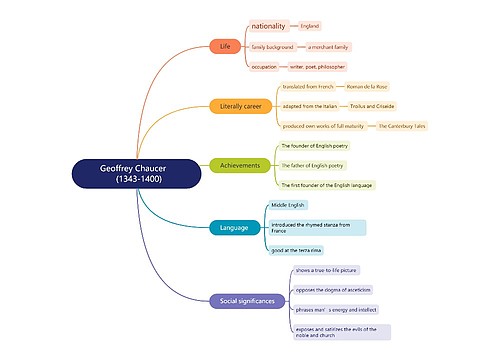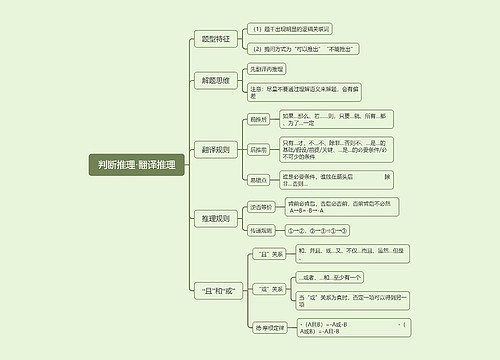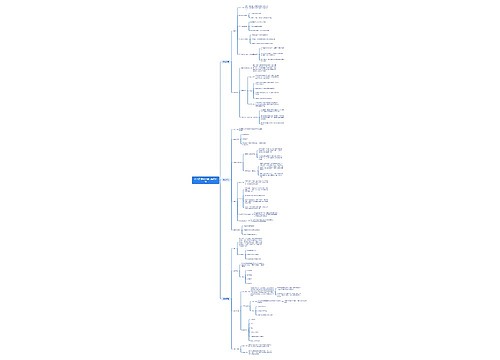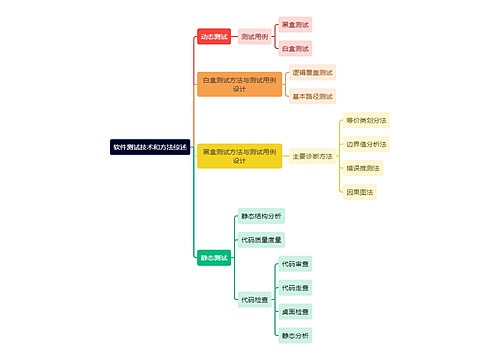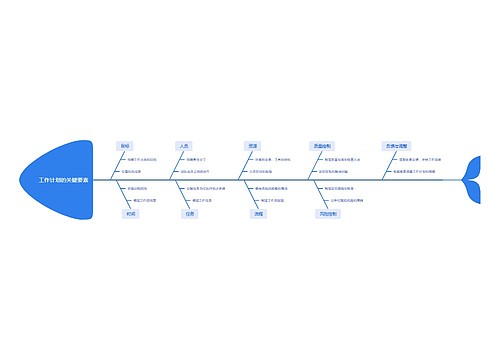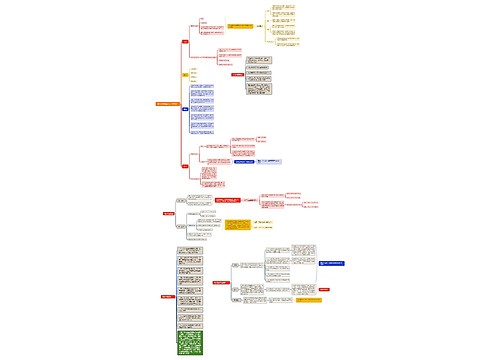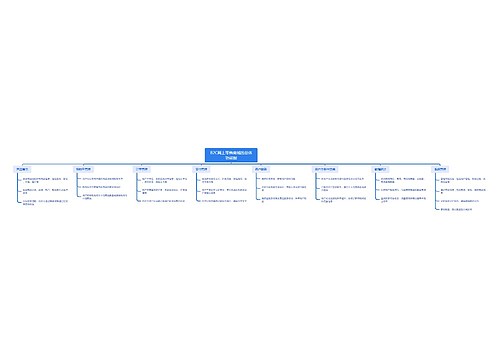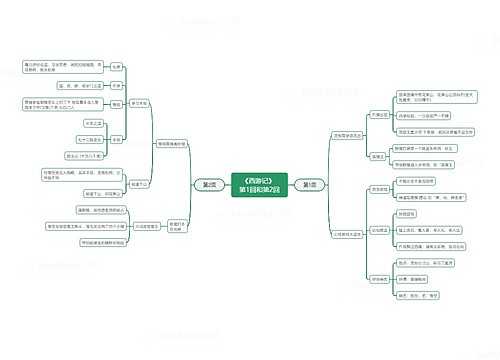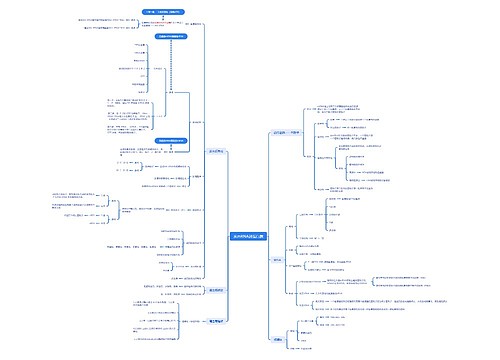
Policy Studies Journal, Vol. 49, No. 1, 2021思维导图
U948105650
2023-10-18

一次性全额资助
黑龙江
吉林
中央补贴
政策研究杂志
树图思维导图提供《Policy Studies Journal, Vol. 49, No. 1, 2021》在线思维导图免费制作,点击“编辑”按钮,可对《Policy Studies Journal, Vol. 49, No. 1, 2021》进行在线思维导图编辑,本思维导图属于思维导图模板主题,文件编号是:9153ae76d4d9ba786ff0fe8e6d5ef734
思维导图大纲
相关思维导图模版
Policy Studies Journal, Vol. 49, No. 1, 2021思维导图模板大纲
Experimentalist Governance with Interactive
Central–Local Relations: Making New Pension Policies in China
Although regional policy experimentation has become a global trend, the distinct features of experimentalist governance in a given country, such as China, remains to be investigated. This article extends policy process theory by proposing the framework of experimentalist governance with interactive central–local relations or Chinese-style experimentalist governance, which combines three features. First, policy goals and instruments are formed separately and interactively by the central and local governments. Second, the central government is burdened with its own concerns about policy performance for maintaining authority and legitimacy. Third, the evaluation of policy pilots relies primarily on the responses of local governments. We further conceptualize three new patterns of experimentalist governance in China, namely, “comparative trial,” “selective recognition,” and “adaptive reconciliation,” in addition to “hierarchical experimentation.” These patterns are illustrated with case studies on four pension policies in China, which are for public sector employees, urban employees, rural residents, and migrant workers.
KEY WORDS: experimentalist governance, regional policy experimentation, pension policy
尽管区域政策实验已经成为全球趋势, 但对如中国这样一个给定国家的实验主义的独特属性仍有 待研究。本文提出中央—地方互动下的实验主义治理框架, 或中国式实验主义治理框架, 来扩展 政策过程理论。中国式实验主义治理框架有以下三个特点:首先, 政策目标和政策工具由中央和 地方政府在互动下分别形成;其次, 中央政府肩负着维护中央自己的权威性和合法性的政策绩效 的压力。;第三, 政策试点评估主要依靠地方政府的反馈。在经典的 ”分层制实验 ”基础上, 我们进 一步概念化了中国实验主义治理的三种新模式, 即 ”对比试验 ”、”选择性认可 ”和 ”适应性协 调 ” 。我们通过对中国针对公共部门职工, 城镇企业职工, 农村居民和农民工四类群体的养老 金政策进行案例研究, 对这四种模式进行了阐释。
Introduction
Regional policy experimentation seems to be a global trend in public policy. American scholars labeled policy experimentation and evidence-based learning of
13
14
successful policy innovation in the United States as “laboratories of democracy” (Volden, 2006). Policy experimentations initiated by the European Union (EU) fea- ture problem solving that involves multilevel participants, along with constant reflec- tion and collective learning based on local practice (Brca, Keohane, & Sabel, 2014; Sabel & Zeitlin, 2012a). In developing countries, such as China, India, Vietnam, and South Africa, regional policy experimentations traditionally involve promoting eco- nomic growth, public service delivery, and environmental governance (Greenstone & Hanna, 2014; Heilmann, 2008a; Malesky, Nguyen, & Tran, 2014; Vreugdenhil, Tal- jaard, & Slinger, 2012). Although most published evaluation studies on policy experi- mentation discuss successful cases, certain policy experimentations are unsuccessful (Greenstone & Hanna, 2014; Sanderson, 2002). In this article, we intend to ask two general questions. How does policy experimentation work in different countries with diversified political regimes? Are there distinct mechanisms that facilitate or obstruct policy experimentations in various policy fields in a given country?
This article contributes to policy process theory by developing a framework of experimentalist governance emphasizing interactions between central and local gov- ernments. Experimentalist governance refers to recursive decision making with pro- visional policy goal setting and revision, and it is based on learning from comparison of alternative instruments in different contexts (Overdevest & Zeitlin, 2014, p. 26). Traditional policy implementation theory emphasizes the supervisory responsibility of the central government and restricted discretion of the frontline. By contrast, experimentalist governance adopts a horizontal structure of learning or accountability in which the performances of various local authorities are under mutual monitoring and peer review (Cohen & Sabel, 1997; Sabel & Zeitlin, 2008, 2012a, 2012b). Experimentalist governance has been previously discussed in the con- text of the EU or global governance in many policy areas (Brca et al., 2014; Campbell-Verduyn & Porter, 2014; Sabel & Zeitlin, 2010). A similar approach to experimentalist governance is also observed in the long history of China, in which the central and local governments interact to make policies (Heilmann & Perry, 2011). What are the distinct features of experimentalist governance in China?
We propose the perspective of experimentalist governance with interactive cen- tral–local relations or Chinese-style experimentalist governance to explore the dynamics of regional experimentation in the social welfare regime in China. The pro- posed framework combines three theoretical and institutional elements. First, previ- ous research only considered situations in which policy goals and instruments are formed by the same organs in the government. Weremodel the framework of experi- mentalist governance by arguing that it can be regarded as an alternative approach to experimental policy process in which policy goals and instruments can be formed separately and interactively by the central and local governments. Second, we argue that the central government is burdened with its own concerns about policy perfor- mance. These concerns stem from the fact that successful policy pilots designed by the central government can help maintain its authority over local governments and legitimacy to the public all over the country. Third, the central government evaluates policy outcomes of local pilots through investigation or research and regards obedi- ence or resistance by local governments as a criterion to judge whether policy
Zhu/Zhao: Experimentalist Governance in China
15
3
experimentation is successful, sustainable, or worthy for expansion. In addition, we argue that to facilitate experimentalist governance in China, the central government conducts three vital recalibrations, that is, enhancing the local autonomy in innova- tion authorized by the central government, coordinating the local financial interests, and practicing recentralization.
Three patterns are further conceptualized based on the new framework of Chinese-style experimentalist governance, which draw on the “hierarchical experimentation” model. These patterns are comparative trial, selective recognition, and adaptive reconciliation. Specifically, we argue that the Chinese government applies different patterns of experimentalist governance to solve problems on pen- sion policies. We select pension policies to demonstrate our proposed framework because the pension system is one of the most challenging and diversified policy fields in China’s social welfare regime that engages the efforts of central and local governments. The cases selected for this article cover four major population groups included in the pension system, which arepublic sector employees, urban enterprise employees, rural residents, and migrant workers. The Chinese pension policy per- fectly covers the four patterns of the experimentalist governance in China. The research data are mainly collected from policy documents and interviews with cen- traland local officials of social welfare departments and experts.1
This article deepens the understanding on regional policy experimentations in China. Regional policy experimentations in China are performed to achieve two main objectives, which are de facto “testing correctness” or “testing error.” Which of the two represents regional policy experimentations in China is a longstanding debate. Those in the camp of “testing correctness” claim that experimentation can be launched to test a prepared policy instrument by the central government. An experi- mentation testing correctness makes minor modifications that can remedy arising flaws, and it is set with high anticipation of success (Cai & Treisman, 2006; Pei, 2012). On the contrary, an experimentation testing error selects an optimal policy solution in the pool of diversified policy alternatives from local practices (Montinola, Qian, & Weingast, 1995; Xu, 2011). Despite the debate, previous studies rarely indicated the reasons the Chinese government chooses different patterns of local policy experimen- tations in similar cases. This article aims to explain local policy experimentations for different purposes (i.e., “testing correctness” or “testing error”) using a single frame- work, that is, experimentalist governance with interactive central–local relations.
Experimentalist Governance in China
In the context of China, the largest developing country and the second largest economy in the world, extensive literature argues that regional policy experimenta- tion can be regarded as one of the distinctive attributes for the country’s economic miracle (Coase & Wang, 2013; North, 1990, pp. 80–81; Woo, 1999). The traditional practice in policymaking is that the central government forms a policy or a plan through regional policy experimentations. To form a national policy, rather than releasing a national document immediately, the central government allows or encourages regional implementations and then promotes the economically successful
16
local experiences “from point to surface” (Heilmann, 2008a; Woo, 1999). This meth- odology can be dated from the revolutionary experience of the Communist Party of China before 1949 (Heilmann, 2008b). The practice has been carried on by the Chi- nese government for generations and gradually became a distinctive but general pol- icy process in China given that policy options and adaptability are available as well.
However, academia has yet to reach a consensus about the mechanisms of policy experimentation. Montinola et al. (1995) argue that the political foundation of the Chinese economic miracle is “market-preserving federalism” (MPF). In MPF, the central government inspires local government experimentation to develop a driving force in the market through decentralization. Landry (2008) and Xu (2011) further conceptualize “regionally decentralized authoritarianism,” which emphasizes the connection between the decentralized economic system and political mobility of local leadership. Another camp argues that the political foundation of “authoritarian cen- tralization,” rather than “decentralization,” facilitates regional policy experimenta- tions. In the regime of authoritarian centralization, rival factions in the central government compete for national leadership by initiating and demonstrating the effectiveness of new policies in selected local governments (Cai & Treisman, 2006). Heilmann (2008a) supports top–down centralization and calls this distinctive Chi- nese policy process “experimentation under hierarchy.” In this framework, the cen- tral government sponsors local economic experimentations and identifies successful local pilots to spread from point to surface.
The uniqueness and complexity of experimentalist governance with interactive central–local relations is mainly rooted in three theoretical and institutional elements. First, previous research on experimental policy process only considered situations in which policy goals and instruments are formed by one government organ (Boyne, Gould-Williams, Law, & Walker, 2005; Heilmann, Shih, & Hofem, 2013; Ludwig, Kling, & Mullainathan, 2011). In the “hierarchical experimentation” model conceptu- alized by Heilmann (2008a), the central government originally decides policy goals and designs policy instruments with unclear potential political risks when imple- mented nationwide. The central government initiates local pilot schemes at a small scale and hopes that policy innovation will reach a wide scope after proven success- ful. However, we remodel experimentalist governance by arguing that it can be regarded as an alternative approach to experimental policy process in which policy goals and instruments can be formed separately and interactively by different organs of the government, namely, the central and local governments. The central govern- ment sometimes decides policy goals and designs policy instruments on its own, but in other cases, it only comes up with policy goals without practical policy instru- ments. In the latter, local governments conduct various policy experimentations that provide alternative policy instruments for the central government.
Second, the dynamic mechanism of the central–local relationship plays a vital role in policymaking, further complicating the ideal model of experimentalist gover- nance. Previous research argued that local governments face various policy concerns because of their remarkably different local preferences (Moore, 2014; Remick, 2002; Tsai & Dean, 2014). Many scholars have focused mainly on the policy performance of local governments (Shi, 2012; Wang, 2009). However, China does not follow a
Zhu/Zhao: Experimentalist Governance in China
17
5
completely unitary or federal political structure (Chung, 2016). The central–local rela- tionships in China constitute two connected aspects, which are decentralization in economic and social responsibilities and political authoritarianism in organizational and personnel institutions (Zhu, 2014). The interaction between the central and local governments ensures local activity under the authoritarian control and serves as the political basis of Chinese-style experimentalist governance (Zhu & Zhang, 2016). Drawing from the existing literature, we argue that the central government is bur- dened with its own concerns about policy performance. These concerns stem from the fact that successful policy pilots designed by the central government can help maintain its authority over local governments and legitimacy to the public all over the country.
Third, the method of policy evaluation limits the Chinese government to learn from comparing alternative instruments in policy experimentation. The ideal framework of experimentalist governance emphasizes policy learning or accountability in which the performances of various local authorities are under mutual monitoring and peer review. The Chinese central government routinely acquaints with local situations and evaluates effects of policy pilots through investigations by government leaders or experts (Heilmann & Perry, 2011, pp. 85–86; People’s Daily, 2013). Through investigations, the central government or entrusted research institutions acquire information about performance of policy experimentation from local officials and accordingly decide on the further devel- opment of policy experiments. In assessing and comparing the effectiveness of potential policy instruments, the central government usually relies on the responses from local governments on policy experimentation, enhancing the bar- gaining power of local governments during interactions between the central and local governments. Especially without a specific national quantitative policy goal, the central government relies primarily on inputs or feedbacks from local governments. Local governments employ various strategies, such as obedience, vertical bargaining, horizontal collusion, or resistance, to respond to the inquiries from the central government (Mei & Pearson, 2014; Shi, 2011; Zhou, 2010; Zhou, Lian, Ortolano, & Ye, 2013). Obedience or resistance by local governments gradu- ally becomes acriterion of the central government to judge whether policy exper- imentation is sustainable, successful, or worthy for expansion.
Four Patterns of Experimentalist Governance
In this article, we develop the framework of Chinese-style experimentalistgover- nance by extending the “hierarchical experimentation” or “experimentation under hierarchy” model conceptualized by Heilmann (2008a). The framework of experi- mentalist governance with interactive central–local relations is illustrated in Figure 1. Heilmann further distinguishes three main forms of policy experimentation in China: (1) experimental regulation (provisional rules made for trial implementation), (2) “experimental points” (model demonstrations and pilot projects in a specific policy domain), and (3) “experimental zones” (local jurisdictions with broad discretionary powers) (2008a, p. 5). The latter two are related to regional experimentations
18
Figure 1. Four Patterns of the Experimentalist Governance in China
concerned in this article. In the hierarchical experimentation model, the central gov- ernment determines policy goals and designs policy instruments and plans. In such a scenario, the central government prioritizes the demonstration of the correctness of policy instruments through regional policy experimentation, which helps the central government to build authority over local governments and legitimacy to the public. Localities with pilot schemes are selected by the central government without consid- ering representativeness of site selection. For example, Heilmann (2008a) especially mentions the stock markets in Shanghai and Shenzhen as cases of experimental points and the Shenzhen Special Economic Zone as a case of experimental zone. If experimentation goes smoothly, then, depending on the policy orientation it set, the central government will either keep implementing the policy in the pilot areas or rec- ommend policy diffusion across the entire country. If the policy in the pilot areas does not develop as well as originally designed, then the central government will simply stop the policy experimentation. We acknowledge the “hierarchical experimentation” model as the basic form of the experimentalist governance in China. The problem lies in that Heilmann’s typology does not distinguish the rea- sons the Chinese central government chooses different strategies to initiate “hierarchical experimentations.” The “hierarchical experimentation” model also overlooks the important issue regarding representativeness of site selection. That is, why does the central government carefully select representative localities in some regional policy pilot projects but does not in others?
The second (or the first new) pattern of experimentalist governance in China is comparative trial. In this pattern, the central government originally designs a policy goal but has several undecided policy instruments. To test the policy plan and screen out optimal policy instruments, the central government assigns local governments as comparative policy pilots. In this pattern of policy experimentation, local pilots must
Zhu/Zhao: Experimentalist Governance in China
19
7
follow policy goals and instruments designed or approved by the central govern- ment. This pattern can be considered part of the experimentalist governance rather than a traditional central policy implementation, because local governments do not simply implement the request of the central government. In addition, the central government does not simply supervise. On the one hand, the central government takes the responsibility to support local pilots and permits their initiatives on the details of the experimentations. On the other hand, local governments possess the autonomy to decide whether to join or refuse the pilot schemes according to their interests. “Comparative trial” also differs from “experimentation under hierarchy,” although they are both patterns of experimentalist governance with a clear central goal decided by the central government. Unlike in “hierarchical experimentation” that does not consider the issue of representativeness in pilot schemes, the central government prefers choosing a relatively large number of representative locations for comparatively testing errors in different undecided policy instruments. Therefore, in conducting a comparative trial, the central government pays more attention to the representativeness of site selection than to experimentation under hierarchy despite the imperfection of the former in randomized experimentation. In addition, in com- parative trial, the central government spends considerable energy in assessing the performances of different pilot sites and is always ready to stop pilots with unsatis- factory or unsuccessful results.
The third (or the second new) pattern of experimentalist governance is selective recognition. In this pattern, the central government sets a policy goal but temporarily has no idea about policy instruments. By contrast, local governments, directly facing social demands, are motivated to test different policy innovations according to national goals and local preferences. In this scenario, the central government holds an open-minded attitude toward multiple local experimentations to explore suitable policy instruments. The central government also absorbs ideas from local practices or simply adopts one local innovation as the national plan by reviewing the multiple policy initiatives made by local governments. Whether a local plan can be the blue- print of the national scheme maybe contingent on many reasons. But one fundamen- tal condition is that the plan must be more consistent with the central policy goal and more effective than other local innovations. Unlike in comparative trial, the cen- tral government in this pattern does not understand comprehensively the concrete policy designs until it selectively recognizes the satisfactory local initiatives per- formed according to the central policy goal.
The fourth (or the third new) pattern is adaptive reconciliation. In this pattern, the central government decides neither on a policy goal nor policy instrument from the beginning. This situation implies that the central government is faced with newly emerging issues or is unfamiliar with related problems. This unawareness of the cen- tral government allows local governments to initiate policy experimentations with- out unified policy goals, which may lead to inconsistency or even contradictions among different local practices. The urgent situation of local contradictions drives the central government to adapt this new situation and form a central policy goal aiming at relevant issues. After determining a national goal, the central government reconciles the conflicts of local governments through administrative regulations or
20
financial incentives. Although the action of the central government lags, its authority in reconciliation can help local governments reach a consensus.
Recalibrations of Policy Experimentation in Social Welfare Regimes
Although studies elaborate general mechanisms that can be used to explain pol- icy experimentations in social welfare regimes, such as rural and urban health care and pension policies (Heilmann, 2008a, pp. 19–20; Shi, 2012), systematic theoretical analysis focusing on the large number of regional policy experimentations on Chi- na’s social welfare regime is comparatively inadequate. The theoretical gap stems from the different political situations between economic and social welfare policies in three aspects. First, the development of economic policies enriches local finance and consequently stimulates local motivation (Montinola et al., 1995; Xu, 2011). How- ever, social policies usually consume local financial resources and do not produce direct fiscal motivation (Shi, 2012). Second, the political promotion of local officials is primarily based on the performance evaluation of local economic development rather than on the performance of social welfare provision. Therefore, the linkage between regional policy experimentation in the social welfare regime and the promo- tion incentives of local officials is relatively loose (Malesky & London, 2014). Third, in economic policy fields, the central government allows and encourages regional variations according to local characteristics. By contrast, a unified national frame- work that requires regional equalization is usually presumed in the social welfare system, although certain local differences are allowed.
We argue that the central government conducts specific recalibrations to facili- tate experimentalist governance in social welfare regime. First, the central govern- ment authorizes local governments with a considerable extent of autonomy in innovation. Although the goal of developing the social welfare regime is determined by the central government, local governments can design concrete institutional arrangements, such as welfare coverage and coordination among various social pro- grams. Finally, the policy instruments are interactively explored by the central and local governments.
Second, the central government coordinates local financial interests especially in social welfare policies that consume financial resources. Such practice can either encourage multiple local innovations or compel local governments to follow a central policy goal. Since the 1994 Tax-sharing System Reform, the central and local govern- ments have followed a shared financial distribution structure. On the one hand, financial relations are set up according to the principle of division of power, and the local governments are responsible for most of the expenditures on the national social welfare (Caulfield, 2006, Zhou, 2010). Local governments account for nearly 90 per- cent of the total spending on culture, education, science, and public health as well as for virtually all the expenditure on social relief and welfare and environmental pro- tection (Fan, 2015). To save financial expenditure, local governments occasionally disobey central administrative commands stipulating that they should establish a nationwide unified welfare regime with the excuse of shortage of local fiscal resour- ces. On the other hand, the central government obtains a large part of tax resources
Zhu/Zhao: Experimentalist Governance in China
21
9
and reallocates fiscal transfer payments to balance the regional economic variations among local governments. In addition, the fiscal transfer payments are important tools for allowing the central government to regulate and provide incentives to local governments for following instruction.
Third, the shift from decentralization to recentralization has been practiced in experimentalist governance in social welfare regimes. To realize great equalization and encounter regional protectionism, the central government has launched recen- tralization after decentralization (Chung, 2016; Mertha, 2005). Specifically, recentrali- zation in the social welfare regime requires local governments to provide basic social security according to national standards (Zhu, 2016). In this process, the central gov- ernment can develop a consistent national framework that transforms divergent local policies to a unified national plan. Recentralization serves as a policy learning mech- anism and does not contradict the philosophy of experimentalist governance that encourages local initiatives. When local governments conduct local experiments, no stable horizontal mutual learning channel exists despite the transregional learning that happens from time to time. Through recentralization, local experimentations can be communicated and learned at the platforms, such as national conferences or documents, established by the central government. Moreover, in a decentralized sys- tem, policy innovators, who overcome economic and political risks, provide useful information for other local governments. All levels of government are incentivized to freely ride off their neighbor’s experimentations, which in turn discourages initiative local innovation (Cai & Treisman, 2009; Strumpf, 2002). By contrast, recentralization stimulates the motivation of local innovation by overcoming the problems of collec- tive action. For instance, the central government may evaluate local experimentations as political performance and acknowledge successful innovative policy entrepre- neurs with personal credits (Zhao, Zhu, & Qi, 2016).
Pension Reform since Marketization in China
The traditional pension system in China was established only in urban areas. Along with the national market economy reform, China changed its urban social welfare system which used to depend on employee work units (danwei). The new system features a diversified allocation of welfare responsibilities among the state, market, and individuals (Frazier, 2004a; Leung & Wong, 1999). To reduce costs for enterprises and establish a more effective funding base (Guan, 2000; Salditt, White- ford, & Adema, 2008), the Urban Enterprise Employees’ Pension System (UEEPS) (also called the basic pension system) was reformed in the mid-1980s, and it speci- fied that pension contributions should be undertaken by employees and enterprises. Since 1995, China has determined the basic pension system combined with social pooling with the rule of pay-as-you-go and individual accounts. Although the contri- bution sources included no fiscal funding, the government held great responsibility in developing the social welfare system (Wong, 1998).
As the reform of the social pension system developed, the Chinese government faced many challenges. The first challenge was the fiscal concern of implementing the pension system in urban areas. In China’s tax-sharing fiscal regime, the local
22
governments had to take primary responsibility of financing social policies (Ngok, 2013). In the UEEPS, the fiscal capacity of local governments was inadequate, and the division of financial responsibility between the central and local governments was unclear. This tension between the central and local governments was exhibited in solving the problem of “empty accounts,” which refer to individual accounts of the basic pension system without actual cash deposit in the employee accounts; the figures of the so-called deposit amount were artificial (Dong & Wang, 2014). As con- tributors were much less than pensioners in the UEEPS, most local governments found that the social pooling contributions were insufficient to pay current benefits, particularly when considering the legacy pensions before the UEEPS was established because these populations had no contribution to the pooling. To solve this financial problem, local governments generated “empty accounts.” Local pension schemes were designed to be self-sustaining, but the central government actually spent a large amount of money to subsidize individual accounts because of the deficient fiscal capacity of local governments. How to deal with the financial problems was the com- mon challenge faced by the central and local governments.
The second challenge was expanding the social pension system to rural areas. Reducing the pension coverage gap was a major concern of China’s social pension system (Palacios & Knox-Vydmanov, 2014). However, following an urban–rural dual structure, the UEEPS only covered urban enterprise employees. The reform of the social pension insurance in rural areas fell behind the development of urban pension insurance (Shen & Williamson, 2010; Shi, 2006). For years, rural resi- dents, who accounted for approximately 70 percent of China’s population (National Bureau of Statistics, 1991), were not covered by social pension insur- ance system. The central government built a rural social pension insurance sys- tem (also called “old rural pension system”) in 1992. However, this policy displayed poor performance and gradually generated declines in the number of insured people; difficulties in running funds; and even a program standstill, because the pension fund was mainly contributed by individual farmers and provided a low standard of pension benefits. Owing to these problems, the cen- tral government believed that China’s rural areas at that time did not meet uni- versal conditions for the implementation of social insurance and decided in 1999 to end this system in all localities (State Council, 1999). Given that the situations of rural areas significantly varied from the urban regions, designing the rural social pension system became an important mission.
The third challenge was building a unified system and reducing the inequality existing in various pension systems for different population groups. A unified pen- sion system would reduce the costs of labor mobility, facilitate the formation of an efficient labor market, and enhance social integration (Lejour & Verbon, 1996; Li, 2014). However, the Chinese pension regime was regulated by different ministries, covering various population groups and providing different benefits. In urban areas, apart from the UEEPS, a separate pension system existed for civil servants and pub- lic sector employees (shiye danwei), which was a noncontributory pension scheme; it was fully subsidized by the government budget and offered more generous benefits than the UEEPS (Salditt et al., 2008; Wu, 2013). When the pension system reform for
Zhu/Zhao: Experimentalist Governance in China
11
23
enterprise employees was designed and released, the State Council (1991) did not set up a clear plan for the reform of pension system of public sector employees.2 Although many local governments have taken the initiative and built local policy pilots since 1992 with the encouragement of the Ministry of Personnel, these local practices have aimed only at changing the payment methods but maintained the funding method of financial contribution and predominant benefits for public sector employees (Zheng, 2012). These local practices, which were far different from an actual system integration into the UEEPS, revealed that local officials were reluctant to launch a radical reform since their own benefits were involved. As the local policy pilots gave no alternative policy instruments for achieving the integration, the central government did not adopt any of those policies and kept the national pension policy for public sectors unchanged. In the reform plan of urban social security released in 2000, the central government decided to maintain the current national pension policy for public sector employees which run separately from the UEEPS and kept on exploring an integration plan through research and policy experimentations (State Council, 2000). Apart from the division of employees of public sectors and enter- prises, the emergence of migrant workers,3 who registered their residences in rural areas and worked in cities, made the segmentation more prominent. The Chinese government realized that a pension system must break down the barriers between these population groups to facilitate labor mobility. Addressing the inequities and integrating various population groups into one social pension system became the ultimate policy goal in developing the pension system (Frazier, 2004b).
Making of Four Chinese Pension Policies
The Chinese government sought new solutions to address the challenges in the existing pension system. For each specific target group, the policy goals and policy instruments of the new pension system were formed with joint efforts of the central and local governments. These cases exhibited various patterns of experimentalist governance. In the case of pension system reform for public sector employees, the central government enforced experimentation under hierarchy strategy before finally releasing a nationwide reform mandate. In the case of pilot work for fully funding the individual account, the central government initiated a “comparative trial” in which the central government decided the policy objectives and alternative policy instruments and appointed local pilot areas for testing. In the case of the new rural social pension insurance, the central government determined the policy goal and rec- ognized policy instruments supplied by local innovative practices that were suitable for a national scheme. In the case of the pension insurance for migrant workers, the central government reconciled various local policy objectives and instruments as well as formed a national policy adaptive to various local authorities.
24
Experimentation Under Hierarchy: Reform of Pension Systems for Public Sector Employees
With the deepening of the pension system reform, the central government deter- mined to marketize the pension system for public sector employees to be consistent with the basic pension system for enterprise employees. Through an experiment under hierarchy strategy, the central government first performed its integration plan in several pilot areas. The State Council promulgated the “Notice of Issuing the Pilot Program of Pension Reform for Staff of Public Institutions” in 2008,4 assigning Shanxi Province, Shanghai City, Zhejiang Province, Guangdong Province, and Chongqing City as pilots. This pilot program was implemented only in public insti- tutions and tried to build a new system which was in accordance with the UEEPS. Specifically, the new pension system for public institutions of these pilots adopted the same contribution method as the basic pension system, which stipulated that an employer must pay 20 percent of the total wages and the individual 8 percent of the wage to a personal account. The method of pension benefits of this piloting system was similar with the pension system of enterprise employees. By sharing contribu- tion responsibilities between individuals and employers and adjusting the pension benefits, this policy aimed to essentially integrate the two systems. However, this reform faced much resistance during the implementation because the loss of pension caused by the reform led to dissatisfaction of employees of public institutions, and the design of developing the reform only for public institutions resulted in a new system division between government offices and public institutions (Xinhuanet, 2013; Zhu, Gao, & Chen, 2015).
The outcomes of the pilot program revealed that the integration of pension sys- tems should be implemented thoroughly in all public sectors and equipped with detailed measures of compensation to ensure the benefits of relevant targeted groups. Using the reflection of this pension experimentation as basis, the central gov- ernment reformed the policy instruments and extended this policy from several pilots to the entire country by introducing a national policy. After the failure of the pilot reform in 2008, the Ministry of Human Resources and Social Security (MHRSS) collaborated with relevant government departments and several research institutions to design reform plans seeking policy solutions through field investigations. The State Council then issued the “Decision on the Reform of the Old-Age Insurance Sys- tem for Employees of Governments and Public Institutions” in January 2015. This policy preserved the policy instruments in the pilot program and made adjustments mainly in the following aspects. On the one hand, this reform covered both public institutions and government agencies. On the other hand, this reform generated no actual loss of pension income for the employees through taking several supporting measures, including a detailed plan of the occupational pension system and a deci- sion of adjusting the wages for public sector employees made in January 2015. This system was implemented all over the country without obvious resistance because it solved the problems revealed in the previous pilot program.
Zhu/Zhao: Experimentalist Governance in China
13
25
Comparative Trail: Pilot Work for Fully Funding Individual Accounts
The problem of individual “empty account” surfaced after China adopted a sys- tem of integrating the social overall pooling with individual accounts in the UEEPS (State Council, 1995). “Empty accounts” undermined the trust of Chinese employees in the pension system, and possibly aggravated financial difficulties in paying the benefits in the future (Pozen, 2013). In December 2000, the State Council issued the “Plan for Pilot Projects to Improve Urban Social Security System” (referred to as “Circular No. 42” hereafter for brevity) to solve this problem by launching a pilot plan of fully funding individual accounts.
This pilot plan, controlled by the central government, contained a clear design of the policy goal and undecided policy instruments. Circular No. 42 was drafted by the Investigation Office of Economic Special Subject setup by the State Council. After consultation with invited experts, the Investigation Office set the goal of fully fund- ing individual accounts and formulated the pilot plan. In the hope that the individ- ual pension accounts could be fully funded, the pilot plan required urban enterprise workers to pay 8 percent of their wages, instead of 11 percent, to their individual accounts, and social overall fund and individual account fund should be separately managed. Liaoning Province was selected as the first pilot area because this province faced a serious problem of “empty accounts” due to a large number of laid-off work- ers resulting from the reforms in the state-owned enterprises. Before the pilot plan was officially released as Circular No. 42, the central government had collected the ideas of local governments twice but the main advice of the local governments was not ultimately adopted (Lu, 2011).
To establish a nationally feasible plan of fully funding the individual accounts, the central government began to test alternative policy instruments with different financial sharing modes in quite a few representative pilot sites. The selection of pilot sites prioritized the geographical and economic representativeness of the local gov- ernments (see Table 1). With the implementation of the pilot work, the financial sub- sidies from the central government gradually dropped and the pilot provinces and municipalities had a growing share in the financial responsibilities. The detailed methods of financial subsidies were made according to the economic levels of local governments.
The responses from different local governments with the pilot scheme were var- ied based on their own financial interests. Local governments were concerned about their financial responsibility because of the huge fiscal resources needed in fully funding the individual accounts, and they asked for more fiscal support from the central government during the experimentation. In the selected pilot provinces with the central financial support, the relevant local governments gave positive feedback in promoting the reform. The three provinces in northeast China participated actively in the pilot work and hoped that the central government would take a larger share out of the financial input (Lu, 2011, pp. 128, 139). For most province pilots appointed in 2006, they followed the central government’s arrangement and posi- tively promoted policy innovations for the pilot scheme due to the vigorous support of the central financial resources. However, for the pilot provinces without central
26
Table 1. Pilots of the Fully Funding Individual Accounts of UEEPS With Central Subsidy
Year of Pilots
Pilot Provinces/
Municipalities
Policy Instruments: Financial Burdens for Central and Local Governments
Initial Proportion for Fully Funding
the Individual Accounts
(Percentage Based on
Individual Salary
for Contribution Computation)
Proportion of the
Central Financial Subsidy (Percentage Based on the
Total Input of Fully
Funding Individual Accounts)
2001
Liaoning
8% one-off fully funding
the accounts
75%
2004
Heilongjiang and Jilin
5% initial proportion
75%
2006
Tianjin, Shandong
3% initial proportion
75% with semi-dynamic
Henan, Shanxi
subsidiesa
Hubei, Hunan and
2006
Xinjiang
Shanghai
3% initial proportion
With no central subsidy
2008
Zhejiang
3% initial proportion
2008
Jiangsu
5% in pilot cities
2008
Guangdong
Having no definite
policy innovation
Data Source: The authors collected relevant data by sorting out the relevant policy documents of the
State Council for approving the pilot solutions of all provinces and municipalities.
aThe semidynamic subsidy of individual accounts implies that the central finance would give the fixed lump sum subsidy to the fully funded proportion (stock resources) and would not adjust with the change in individual salary. For the newly increased fully funded part (the increment), the total individ- ual salary of the current year will be the base for subsidy calculation. For each 1% of fully funding input, 0.75% will be subsidized by the central finance, but not more than 3.75% in total at most.
subsidies, the experimentations were barely unfolded. Zhejiang Province was the first to respond positively to the call of the central government for the pilot scheme. Nevertheless, the implementation was ineffective as no detailed plan was made for instructing the practice of city governments (Auditing Bureau of Taizhou City, 2011). Guangdong Province did not actually join this pilot program although it was selected as a member of the new round of pilots. Likewise, Shanghai was selected by the State Council as the pilot municipality in September 2006. Nonetheless, the municipality was rather slow in promoting the work of fully funding of individual accounts without financial support from the central government. Since 2009, the pilot work of fully funding individual accounts in Shanghai has remained stagnant (21st Century Business Herald, 2012).
One of the policy instruments in the experimentation was identified based on the feedback from the policy trails. In 2006, the central government issued a new administrative command to the entire country that required the scale of the individual account to be adjusted from 11 percent to 8 percent of one’s personal wage starting that same year. Compared with the original regulation, this new clause adopted the experience of three pilot provinces in northeast China and relieved the local financial pressure of fully funding individual accounts. For temporarily uncertain policy instruments, such as the fiscal responsibility between the central and local governments, the central government continued experimentation.
Zhu/Zhao: Experimentalist Governance in China
15
27
Selective Recognition: New Rural Social Pension Insurance
After the failure of the old rural pension system in 1999, all local governments started to explore various policy instruments for the national plan of the new rural social pension system. By the end of 2007, nearly 2,000 counties (cities or districts) built their respective rural social pension insurance systems, and more than 200 counties established the pension systems subsidized by public revenue (Shi, 2009). These new rural pension systems did not exert much pressure on government finance because they did not have the historical burden and were implemented after a meticulous calculation in the funding budget.
Among the many local innovations, the policy of Baoji City of Shaanxi Province was finally selected as the blueprint for the national rural pension insurance plan. Baoji city started research on building a rural social pension policy in 2006, and got approved as one of the provincial pilot cities in 2007. In June 2007, Baoji City released a rural pension program in which the new system set up personal pension accounts jointly contributed to by individuals, the rural community (“Jiti”), and public finance. In addition to the pension derived from the personal account, the pensioner received a subsidy called the “basic pension” of 60 yuan per month which was funded fully by public finance and this subsidy would be adjusted according to eco- nomic development and price index. The design of multisource contributions and the benefit superior to the old pension system provided a benign social protection and elevated the villagers’ willingness of joining the pension system. This system was launched in several pilot counties of Baoji city and obtained good effects. By November 2007, more than 85 percent of villagers over the age of 45 of the pilot counties joined the system, with 106,000 participants and 26,000 pensioners (Hua- shang Net, 2007). In November 2007, Baoji City was acknowledged as the national pilot city of new rural social pension insurance by the Ministry of Labor and Social Security, which was reconstructed into the MHRSS in 2008.
Since then, the central government has established a mechanism to study the facts of local innovations. In 2008, the MHRSS set up a National Rural Pension Sys- tem Working Liaison Mechanism with 50 key cities and counties which were recom- mended by their superior provincial authorities. The MHRSS communicated with these key areas and evaluated their practices on developing rural social pension poli- cies. As such, this liaison mechanism provided a channel for local policy innovations rising up to national level (Zheng, 2013). In November 2008, Yin Weimin, who was the Minister of MHRSS at that time, conducted a field investigation in Baoji City on the pilot work and concluded that this policy could be promoted to other cities. In the report to Vice Premier Zhang Dejiang, Yin proposed that the national rural social pension scheme should learn from Baoji City, meaning that the central finance should cover the basic pension and the local finance could subsidize the contribution of farmers (Government of Baoji City, 2009).
In 2009, the State Council issued the “Guidelines on Conducting Pilot Pro- gram of New Rural Pension Scheme (State Council [2009] No. 32)” to build a government-subsidized and universally beneficial rural social pension system for farmers. The pilot for the new rural social pension system (NRPS) indicated
28
that the financial responsibilities would be mutually shared by individuals, com- munities, and the government. This setup followed the institutional arrangement of the rural pension policy of Baoji City. By the end of 2012, the NRPS was estab- lished in all counties of China (MHRSS of China, 2013).5 Thus far, the central government has established a complete national policy and has changed diverse local plans into a unified one.
In this case, the central government decided on the policy goal of building a rural social pension system but did not make a proper nationwide policy instrument at hand. The diverse and independently initiated local practices provided available policy instruments for the central government to select. More than 200 local govern- ments adopted arural pension system with public financial subsidies. Several cities, such as Changshu City in Jiangsu Province, had already adopted a policy that shares many similarities with the policy of Baoji City in an earlier time (Department of Human Resources and Social Security of Jiangsu Province, 2009). Therefore, the case of Baoji City was only one example of local experiments that the central gov- ernment learned from. The central government recognized one of the local practices as the blueprint of the national policy instrument and launched a national pilot scheme throughout the country. Finally, the establishment of the national NRPS underwent selective recognition from diversified local practices to a unified national policy instrument.
Adaptive Reconciliation: Integrated Pension Insurance for Migrant Workers
Different from the UEEPS for urban employees, the social pension insurance for migrant workers did not obtain much attention from the central government at the beginning, and it originated from the practices of local governments. In 1990s, the number of the migrant workers in urban areas increased drastically and generated social problems. One of these problems was that the migrant workers had no access to the social security system which covered their urban worker colleagues. Certain local governments with large numbers of migrant workers, particularly the govern- ments of developed Eastern areas, launched the social pension insurance policies for migrant workers (see Table 2). During this period, the central government encour- aged the protection of interests and social benefits of the migrant workers, but had neither policy instruments nor policy goals for the pension insurance system for this population group. The lack of guidelines resulted in differences in pension insurance regulations for migrant workers among local authorities.
Without a national pension scheme for migrant workers, these different local policies for migrant workers were hardly mutually identified or compatible with each other and gradually generated contradictions and problems. First, the migrant workers faced difficulties in receiving pension benefits from these separated local policies. For migrant workers who had to change their working places from time to time, they were unlikely to reach the common requirement of getting pension bene- fits that a person had to cumulatively contribute money to more than 15 years in one place. Considering these pension polices had no actual benefits for them, migrant
Zhu/Zhao: Experimentalist Governance in China
17
29
Table 2. Patterns of Local Social Pension Insurance Practices for Migrant Workers
Region
Time
Models
Description
Guangzhou Zhengzhou Beijing
Zhejiang
Shanghai
Chengdu
1998
2004
2001
2003
2002
2003
Expansion model Expansion model Urban-referred
model
Double-low model
Integrated
insurance model
Integrated
insurance model
To expand the coverage of the UEEPS to
incorporate migrant workers
To adopt a similar model with the UEEPS but operated independently
To incorporate migrant workers into the UEEPS but
the levels of contributions and benefits should
be lower than those for the average urban employees
To build a comprehensive social insurance system integrating work-related injury insurance,
medical care, and pension subsidies for migrant workers
Data Sources: Government of Guangzhou City: “Notice of permitting the workers without Guangzhou’s urban household to participate in basic pension insurance for employees.” Government of Zhengzhou City: “Opinions on rural labor participation in Zhengzhou’s social pension insurance after labor migrant.” Government of Beijing City: “Interim methods for the pension insurance of migrant workers in Beijing.” Government of Zhejiang Province: “Opinions on improving the rule of ‘low contributions and low benefits’ in the basic pension insurance for employees.” Government of Shanghai City: “Interim methods for the integrated insurance of migrant workers in Shanghai City.” Government of Chengdu City: “Interim methods for the integrated insurance of employees with non-urban household in Chengdu City.”
workers usually chose to withdraw the money from their individual accounts when they resigned but leave the money of overall pooling account paid by their former employers in the local pension pooling because this money could neither be with- drawn by the insured person nor transferred to the next working place. Certain local governments adopted this policy just because they realized that through this policy they could gain an income higher than the expenses. For instance, Huzhou City in Zhejiang Province and Dongguan City in Guangdong Province established the social pension policy for migrant workers because they tried to make up the fund deficits of the UEEPS by contribution from pension system of migrant workers (Ngok & Zhao, 2011; Yu & Gao, 2012).
Second, the local pension policies for migrant workers aggravated the regional inequality and local protectionism and restricted the implementation of the central unified policy. The areas attracting the migrant workers usually had satisfactory eco- nomic and financial conditions and, as noted, bore little pension welfare responsibil- ity on these people. Moreover, the accumulated amount of the overall pooling from the migrant workers further enriched the funds in these areas. The local governments having to undertake the ultimate pension responsibility were usually areas where the migrant workers came from, namely, the localities of their registered household. These localities generally had poor economic and financial situations, and the addi- tional costs for the pension would aggravate local fiscal distress. Furthermore, the increased regional interests and institutional barriers brought about by the pension insurance for migrant workers resulted in hindrances to provincial overall pooling (Ngok & Zhao, 2011; Shi, 2009). This pension insurance for migrant workers was pro- posed by the State Council in 1999 to co-coordinate various city-level funds.
The emerging problems generated by the diversified local pension policies for migrant workers pushed the central government to determine a national policy
30
scheme. In view of the difficulty for migrant workers to join a unified pension insur- ance system and transfer their pension account, the central government issued poli- cies to break the regional institutional barriers. At the end of 2009, “Interim Measures of Transferring Accounts of Basic Pension System for Urban Workers” (referred to as “Interim Methods” hereafter) was officially promulgated, which is applicable for “all persons having participated in the basic pension insurance for urban enterprise employees, including migrant workers.” “Interim Methods” specify that when migrant workers with the pension insurance flow from one area to another, their pen- sion insurance accounts can be transferred and continued, and their contribution years can be accumulated. Specifically, the individual account of these workers and 12 percent of their salary6 in the overall pooling account paid by enterprises can be simultaneously transferred. “Interim Methods” clarify which government among dif- ferent localities a person worked in is responsible for providing pension benefits.
Based on previous local pension policies for migrant workers, the national plan of the central government was made to reconcile various local interests. The policy balanced the interests between places that the migrant workers leave and places they go to. If the central government asked local governments to transfer out all the con- tributions paid by the enterprises, then resistance from these localities would occur. Considering both sides, the central government finally fixed a proportion of 12 per- cent to transfer and localities where the migrant workers leave can keep a proportion of 8 percent.
Conclusion
In this article, we propose a new framework of experimentalist governance with interactive central–local relations and demonstrate it with comparative case studies on the making of new pension policies in China. We argue that Chinese-style experi- mentalist governance is an alternative approach to understanding experimental pol- icy processes in which the central and local governments jointly set policy plans based on local experimentations. China’s experimentalist governance has three fea- tures in the context of the authoritarian regime and a national unified social scheme. First, the policy goals and policy instruments of a national policy can be formed sep- arately and interactively by the central and local governments. Second, the Chinese central government is burdened with its own concerns about policy performance. These concerns stem from the fact that successful policy pilots designed by the center can help maintain its authority over local governments and legitimacy to the general public all over the country. Third, the central government relies primarily on the feedback, obedience, or resistance by local governments as a criterion to judge whether policy experimentation is successful, sustainable, or worthy for expansion.
Using the theoretical and institutional settings of Chinese-style experimentalist governance as basis, we further conceptualize three new patterns of experimentalist governance in China, namely, “comparative trial,” “selective recognition,” and “adaptive reconciliation,” drawing from the “hierarchical experimentation” model. These patterns are illustrated with comparative case studies of four pension policies for public sector employees, urban employees, rural residents, and migrant workers
Zhu/Zhao: Experimentalist Governance in China
31
19
during the marketization in China. For each specific target group, the policy goals and instruments were designed with joint efforts of the central and local govern- ments through regional policy experimentation. Moreover, the central government strategically conducted three crucial recalibrations to facilitate the experimentalist governance, including energizing local innovations through authorization, coordinat- ing the local financial interests and policy divergence, and pursuing unified national policy plans in the social welfare regime through the shift from decentralization to recentralization.
This research contributes to the literature on public policy theory by exploring the detailed mechanisms of regional policy experimentation in China. Previous research on experimentations in China focused only on how authoritarianism and decentralization encourage local government innovation by following the directions aimed by the central government. In the current study, we explain how the central and local governments interactively contribute to the formation of final national poli- cies by investigating policy goals and instruments separately. The developmental tra- jectory of China’s pension policy in this study covers dozens of years. Nevertheless, the four patterns of experimentalist governance are relatively stable because they are formed under the different conditions of whether the central government has a pol- icy goal or a decided policy instrument, which do not change according to historical changes. In addition, other Chinese social welfare policies, such as urban poverty alleviation and rural cooperative medical systems, have undergone similar processes from local experimentations rising up to national policy on the conditions of the three features of Chinese-style experimentalist governance.
Furthermore, this framework with four patterns can further the understanding of the general practices of experimentalist governance in other countries. Generally, local experimentations can either testify to the policy goals and instruments designed by a country’s central government or provide policy alternatives to the central gov- ernment with local government practices. Moreover, the central government can learn from the experiences of local experiments to detect emerging policy problems, form national policy goals, and synthesize appropriate local policy instruments. The central government can also encourage local innovations with preferential policy support or financial subsidies and adjust local actions in time to avoid negative uncertainties. Finally, future research can be conducted to examine the theory in other social welfare policies and quantitatively explore the causal mechanisms between the central and local relations and welfare policy diffusion across subna- tional governments in the framework of experimentalist governance.
Dr. Xufeng Zhu is professor and associate dean at the School of Public Policy and Management, and executive director at the Institute for Sustainable Development Goals, Tsinghua University, China. His major research interests include the policy process, policy analysis, and governance. He is the author of The Rise of Think Tanks in China (Routledge, 2013). His recent publications include articles in Journal of Pub- lic Administration Research and Theory, Public Administration, Governance, Policy Scien- ces, The China Quarterly, Public Management Review, Administration & Society, Asian Survey, Public Administration and Development, and so on.
32
Dr. Hui Zhao is assistant professor at the School of Management, Capital Normal University, China. Her research interests include the policy process, social security policies, and local government innovation.
Notes
Earlier versions of this article were presented at the Zhejiang University in 2014, the Mercator Institute for China Studies and Tsinghua University in 2015, the 20th International Research Society on Public Man- agement Conference in 2016, and theRenmin University of China in 2017. We would like to thank Edward Steinfeld, Barry Naughton, Barbara Stallings, Xue Lan, Sebastian Heilmann, Ma Jun, Cui Zhiyuan, Ngok Kinglun, Wu Jiannan, Zhu Tianbiao, Zhu Yapeng, Xu Jianguang, Li Ya, Mei Ciqi, Lu Quan, Li Honglan, and other participants of the workshops and interviewees during the field works the authors have con- ducted. The authors would like to thank the National Science Fund for Distinguished Young Scholars of China (71625006), the National Social Science Foundation of China (15AZD017), and the Research Project for Young Scholars of the National Natural Science Foundation of China (71704117) for the sponsorships.
1. We initially interviewed local officials, such as officials at the Social Security Bureau of Dongguan City, Guangdong Province on pension policy reform and local policy innovations in April and December 2009. These officials include chief of the Social Security Bureau, chief of the pension division, chief of the research office, and several relevant office clerks. We also interviewed officials in the Chinese cen- tral government, such as division director of the National Development and Reform Commission whose responsibilities were social planning and personnel reform in 2015. Other interviewees were experts of pension system in Chinese universities and research institutes during the preparation of the paper.
2. We use “public sector employees” to refer to civil servants and public institution employees.
3. Migrant workers usually refer to people who registered their household in rural areas but work in urban cities (or take part in nonagricultural industries). The latest census reports that approximately 277 million migrant workers in China (National Bureau of Statistics, 2016). Despite their significant contribution to China’s industrialization, migrant workers find gaining equal access to social security difficult compared with urban workers because of the household registration system (hukou) and entrenched rural–urban divide (Ngok, 2012).
4. In 2008, the Ministry of Labor and Social Security and the Ministry of Personnel merged into theMinis- try of Human Resources and Social Security. This organizational change helped in the integration of the two systems.
5. In 2014, the State Council established a unified pension framework by combining the new rural social and the urban resident pension systems (which covers the citizens who are not public sector employees or enterprise employees). TheNRPS was no longer a separated system.
6. The base of the percentage is the individual salary applied for in contribution computation. The contri- bution of the overall pooling account is usually 20 percent of individual salary and paid by employers.
References
21st Century Business Herald. 2012. 2020 Shanghai Pension Gap may be as Large as 83.1 Billion yuan and the Work for Fully Funding the Individual Accounts is just a Lip Service (in Chinese) [Online].
Auditing Bureau of Taizhou City. 2011. Auditing Report on the 2009–2010 Urban Basic Pension Insurance Fund of 2009–2010 (in Chinese) [Online].
Boyne, George A., Julian S. Gould-Williams, Jennifer Law, and Richard M. Walker. 2005. “Explaining the Adoption of Innovation: An Empirical Analysis of Public Management Reform.” Environment and Planning C: Government and Policy 23 (3): 419–35.
Zhu/Zhao: Experimentalist Governance in China
21
33
Brca, Grinne De , Robert O. Keohane, and Charles Sabel. 2014. “Global Experimentalist Governance.” British Journal of Political Science 44 (3): 477–86.
Cai, Hongbin, and Daniel Treisman. 2006. “Did Government Decentralization Cause China’s Economic Miracle?” World Politics 58 (4): 505–35.
——— . 2009. “Political Decentralization and Policy Experimentation.” Quarterly Journal of Political Science 4 (1): 35–58.
Campbell-Verduyn, Malcolm, and Tony Porter. 2014. “Experimentalism in European Union and Global Financial Governance: Interactions, Contrasts, and Implications.” Journal of European Public Policy 21 (3): 408–29.
Caulfield, Janice L. 2006. “Local Government Reform in China: A Rational Actor Perspective.” Interna- tional Review of Administrative Sciences 72 (2): 253–67.
Chung, Jae Ho. 2016. “China’s Local Governance in Perspective: Instruments of Central Government Control.” The China Journal 75: 1324–9347.
Coase, Ronald, and Ning Wang. 2013. How China Became Capitalist. New York: Palgrave Macmillan.
Cohen, Joshua, and Charles F. Sabel. 1997. “Directly-Deliberative Polyarchy.” European Law Journal 3: 313–40.
Department of Human Resources and Social Security of Jiangsu Province. 2009. The Earnest Implementa- tion of the Pilot Work for the Fully Funding of the Individual Accounts Nationwide (in Chinese) [Online].
Dong, Keyong, and Gengyu Wang. 2014. “China’s Pension Challenge: Adaptive Strategy for Success.” Public Administration & Development 34 (4): 265–80.
Fan, Yongmao. 2015. “The Centre Decides and the Local Pays: Mandates and Politics in Local Govern- ment Financial Management in China.” Local Government Studies 41 (4): 516–33.
Frazier, Mark W. 2004a. “China’s Pension Reform and Its Discontents.” China Journal 51 (1): 97–114.
——— . 2004b. “After Pension Reform: Navigating the ‘Third Rail’ in China.” Studies in Comparative Inter- national Development 39 (2): 45–70.
Government of Baoji City. 2009. “Suggestion of Making Baoji City as a National Pilot of Establishing New Rural Social Pension Insurance (Guanyu jiang Baoji shi liewei quanguo tuixing xinxing non- gcun shehui yanglaobaoxian shidian chengshi de jianyi)” (in Chinese). Landbridge Horizon (Daluqiao Shiye) 8 (4): 46.
Greenstone, Michael, and Rema Hanna. 2014. “Environmental Regulations, Air and Water Pollution, and Infant Mortality in India.” American Economic Review 2014, 104 (10): 3038–72.
Guan, Xinping. 2000. “China’s Social Policy: Reform and Development in the Context of Marketization and Globalization.” Social Policy & Administration 34 (1): 115–30.
Heilmann, Sebastian. 2008a. “Policy Experimentation in China’s Economic Rise.” Studies in Comparative International Development 43 (1): 1–26.
——— . 2008b. “From Local Experiments to National Policy: The Origins of China’s Distinctive Policy Process.” The China Journal 59: 1–30.
Heilmann, Sebastian, and Elizabeth J. Perry, eds. 2011. Mao’s Invisible Hand: The Political Foundations of Adaptive Governance. Cambridge, MA: Harvard University Asia Center.
Heilmann, Sebastian, Lea Shih, and Andreas Hofem. 2013. “National Planning and Local Technology Zones: Experimental Governance in China’s Torch Programme.” The China Quarterly 216: 896–919.
Huashang Net. 2007. Baoji City Will Implement a New Rural Pension System as the Only National Policy Pilot (in Chinese) [Online].
Landry, Pierre F. 2008. Decentralized Authoritarianism in China: The Communist Party’s Control of Local Elites in the Post-Mao Era. Cambridge, UK: Cambridge University Press
Lejour, Arjan M., and Harrie A. A. Verbon. 1996. “Capital Mobility, Wage Bargaining, and Social Insur- ance Policies in an Economic Union.” International Tax and Public Finance 3 (4): 495–513.
Leung, Joe C. B. and Hilda S. W. Wong. 1999. “The Emergence of a Community-based Social Assistance Program in Urban China.” Social Policy & Administration 33 (1): 39–54.
34
Li, Bingqin. 2014. “Social Pension Unification in an Urbanising China: Paths and Constraints.” Public Administration and Development 34 (4): 281–93.
Lu, Quan. 2011. Research of the Central and Local Relation in China’s Pension Insurance System Reform during the Transition Period: Taking as the Study Case the Three Provinces in the Northeast China (in Chinese). Beijing: China Labor & Social Security Publishing House.
Ludwig, Jens, Jeffrey R. Kling, and Sendhil Mullainathan. 2011. “Mechanism Experiments and Policy Evaluations.” Journal of Economic Perspectives 25 (3): 17–38.
Malesky, Edmund, and Jonathan London. 2014. “The Political Economy of Development in China and Vietnam.” Annual Review of Political Science 17: 395–419.
Malesky, Edmund, Cuong Viet Nguyen, and Anh Tran. 2014. “The Impact of Recentralization on Public Services: A Difference-in-Differences Analysis of the Abolition of Elected Councils in Vietnam.” American Political Science Review 108 (1): 144–68.
Mei, Ciqi and Margaret M. Pearson. 2014. “Killing a Chicken to Scare the Monkeys? Deterrence Failure and Local Defiance in China.” The China Journal 72: 75–97.
Mertha, Andrew C. 2005. “China’s ‘Soft’ Centralization: Shifting Tiao/Kuai Authority Relations.” The China Quarterly 184: 791–810.
Ministry of Human Resources and Social Security (MHRSS) of China. 2013. 2012 Human Resources and Social Security Work and Major Work Arrangement in 2013 (in Chinese) [Online].
Montinola, Gabriella, Yingyi Qian, and Barry R. Weingast. 1995. “Federalism, Chinese Style: The Political Basis for Economic Success in China.” World Politics 48 (1): 50–81.
Moore, Scott. 2014. “Hydropolitics and Inter-Jurisdictional Relationships in China: The Pursuit of Local- ized Preferences in a Centralized System.” China Quarterly 219: 760–80.
National Bureau of Statistics. 1991. The Fourth National Census Bulletin (No. 1) (in Chinese) [Online].
———. 2016. Survey Report on the Migrant Workers of 2015 (in Chinese) [Online].
Ngok, Kinglun. 2012. “Serving Migrant Workers: A Challenging Public Service Issue in China.” Australian Journal of Public Administration 71 (2): 178–90.
——— . 2013. “The Recent Social Policy Expansion and Its Implications for Inter-governmental Financial Relations in China.” Australian Journal of Public Administration 72 (3): 344–58.
Ngok, Kinglun, and Hui Zhao. 2011. “Regional Development of China’s Social Security System and its Restrictions—Taking as the Study Case the Social Pension Insurance Integrated Reform in Dong- guan City” (in Chinese). Public Management Research 2011: 39–53.
North, Douglass C. 1990. Institutions, Institutional Change and Economic Performance. New York: Cambridge University Press.
Overdevest, Christine, and Johathan Zeitlin. 2014. “Assembling an Experimentalist Regime: Transna- tional Governance Interactions in the Forest Sector.” Regulation & Governance 8 (1): 22–48.
Palacios, Robert, and Charles Knox-Vydmanov. 2014. “The Growing Role of Social Pensions: History, Taxonomy and Key Performance Indicators.” Public Administration & Development 34 (4): 251–64.
Pei, Minxin. 2012. “Is CCP Rule Fragile or Resilient?” Journal of Democracy 23 (1): 27–41.
People’s Daily. 2013. “Investigation Is the Basis of Making Decision and Achieving Success” (in Chinese) http://opinion
Pozen, Robert C. 2013. Tackling the Chinese Pension System. Paulson Policy Memo [Online].
Remick, Elizabeth J. 2002. “The Significance of Variation in Local States: The Case of Twentieth Century China.” Comparative Politics 34 (4): 399–418.
Sabel, Charles F., and Jonathan Zeitlin. 2008. “Learning from Difference: The New Architecture of Experi- mentalist Governance in the EU.” European Law Journal 14 (3): 271–327.
Zhu/Zhao: Experimentalist Governance in China
35
23
Sabel, Charles F., and Jonathan Zeitlin, eds. 2010. Experimentalist Governance in the European Union: Towards a New Architecture. Oxford: Oxford University Press.
Sabel, Charles F., and Jonathan Zeitlin. 2012a. “Experimentalist Governance.” In D. Levi-Faur (Ed.), The Oxford Handbook of Governance. New York: Oxford University Press.
——— . 2012b. “Experimentalism in the EU: Common Ground and Persistent Differences.” Regulation & Governance 6 (3): 410–26.
Salditt, Felix, Peter Whiteford, and Willem Adema. 2008. “Pension reform in China.” International Social Security Review 61 (3): 47–71.
Sanderson, Ian. 2002. “Evaluation, Policy Learning and Evidence-based Policymaking.” Public Administra- tion 80 (1): 1–22.
Shen, Ce, and John B. Williamson. 2010. “China’s New Rural Pension Scheme: Can It Be Improved?” International Journal of Sociology and Social Policy 30: 239–50.
Shi, Shih-Jiunn. 2006. “Left to Market and Family Again? Ideas and the Development of the Rural Pen- sion Policy in China.” Social Policy & Administration 40 (7): 791–806.
——— . 2009. “Social Security Regionalization: the Space Political Transformation of China’s Social Citi- zenship (in Chinese).” Taiwanese Sociology 18: 43–93.
——— . 2011. “The Contesting Quest for Old-Age Security: Institutional Politics in China’s Pension Reforms.” Journal of Asian Public Policy 4 (1): 42–60.
——— . 2012. “Social Policy Learning and Diffusion in China: The Rise of Welfare Regions?” Policy & Pol- itics 40 (3): 367–85.
State Council. 1991. Decision of the State Council on the Reform of the Old-age Insurance System for Enterprise Employees (State Council [1991] No. 33) (in Chinese) [Online].
———. 1995. Circular of the State Council on Deepening the Reform of the Old-age Insurance System for Employ- ees of Enterprises (State Council [1995] No. 6) (in Chinese) [Online].
———. 1999. Approval of the State Council on Circular of the Rectification of the Insurance Industry Working Group on Plan of Rectification and Reform of the Insurance Industry (State Council [1999] No. 14) (in Chinese) [Online].
———. 2000. The Notice of Issuing the Pilot Program of Urban Social Security System (State Council [2000] No. 42) (in Chinese) [Online].
Strumpf, Koleman S. 2002. “Does Government Decentralization Increase Policy Innovation?” Journal of Public Economic Theory 4 (2): 207–41.
Tsai, Wen-Hsuan, and Nicola Dean. 2014. “Experimentation under Hierarchy in Local Conditions: Cases of Political Reform in Guangdong and Sichuan, China.” The China Quarterly 218: 339–58.
Volden, C. 2006. “States as Policy Laboratories: Emulating Success in the Children’s Health Insurance Program.” American Journal of Political Science 50 (2): 294–312.
Vreugdenhil, H., Taljaard, S., and Slinger,J. H. 2012. “Pilot Projects and Their Diffusion: A Case Study of Integrated Coastal Management in South Africa.” International Journal of Sustainable Development 15 (1–2): 148–72.
Wang, Shaoguang. 2009. “Adapting by Learning: The Evolution of China’s Rural Health Care Financing.” Modern China 35 (4): 370–404.
Wong, Linda. 1998. Marginalization and Social Welfare in China. London: Routledge.
Woo, Wing Thye. 1999. “The Real Reasons for China’s Growth.” The China Journal 41: 115–37.
Wu, Ling. 2013. “Inequality of Pension Arrangements among Different Segments of the Labor Force in China.” Journal of Aging & Social Policy 25 (2): 181–96.
Xinhuanet. 2013. An Investigation on the Pilot Program of Pension Reform for Public Institutions in the 5th Year of the Reform (in Chinese) [Online].
36
Xu, Chenggang. 2011. “The Fundamental Institutions of China’s Reforms and Development.” Journal of Economic Literature 49 (4): 1076–151.
Yu, Jianxing, and Xiang Gao. 2012. “Behavioral Logic and Institutional Basis of Local Developmental States” (in Chinese). Social Sciences in China 33 (5): 95–112.
Zhao, Hui, Xufeng Zhu, and Ye Qi. 2016. “Fostering Local Entrepreneurship through Regional Environ- mental Pilot Schemes: The Low-Carbon Development Path of China.” China: An International Journal 14 (3): 107–30.
Zheng, Bingwen. 2012. “China: An Innovative Hybrid Pension Design Proposal.” In Nonfinancial Defined Contribution Pension Schemes in a Changing Pension World: Progress, Lessons and Implementation, ed. R. Holzmann, E. Palmer, & D. Robalino. Washington, DC: The World Bank, 189–209.
Zheng, Wenhuan. 2013. “From Local Experiment to National Policy: Using the Rural Pension Policy as an Example (in Chinese).” Chinese Public Administration 29 (2): 16–20.
Zhou, Xueguang. 2010. “The Institutional Logic of Collusion among Local Governments in China.” Mod- ern China 36 (1): 47–78.
Zhou, Xueguang, Hong Lian, Leonard Ortolano, and Yinyu Ye. 2013. “A Behavioral Model of ‘Muddling Through’ in the Chinese Bureaucracy: The Case of Environmental Protection.” The China Journal 70:
120–47.
Zhu, Hengpeng, Qiuming Gao, and Xiaorong Chen. 2015. “In Line with International Trends: Review and Analysis of China’s Public Sector Pension Reform (in Chinese).” International Economic Review 23 (2): 9–28.
Zhu, Xufeng. 2014. “Mandate versus Championship: Vertical Government Intervention and Diffusion of
Innovation in Public Services in Authoritarian China.” Public Management Review 16 (1): 117–39.
——— . 2016. “Dynamics of Central–Local Relations in China’s Social Welfare System.” Journal of Chinese Governance 1 (2): 251–68.
Zhu, Xufeng, and Youlang Zhang. 2016. “Political Mobility and Dynamic Diffusion of Innovation: The Spread of Municipal Pro-Business Administrative Reform in China.” Journal of Public Administration Research and Theory 26 (3): 535–51.
查看更多
1113爆卡会总结会会议纪要思维导图
 U245265618
U245265618树图思维导图提供《1113爆卡会总结会会议纪要》在线思维导图免费制作,点击“编辑”按钮,可对《1113爆卡会总结会会议纪要》进行在线思维导图编辑,本思维导图属于思维导图模板主题,文件编号是:aaf6c152a765d5821e8e1787f2b3226e
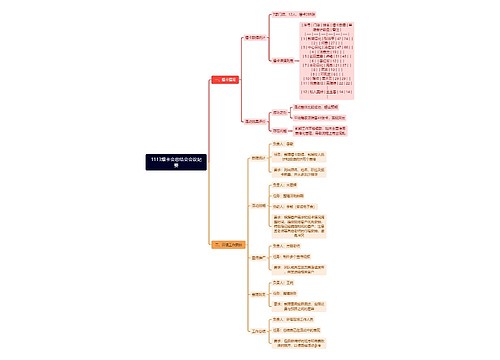
第1章 化工设计基本知识思维导图
 U882667602
U882667602树图思维导图提供《第1章 化工设计基本知识》在线思维导图免费制作,点击“编辑”按钮,可对《第1章 化工设计基本知识》进行在线思维导图编辑,本思维导图属于思维导图模板主题,文件编号是:70ec0519ed26419068a32a511862aadd

相似思维导图模版
首页
我的文件
我的团队
个人中心
